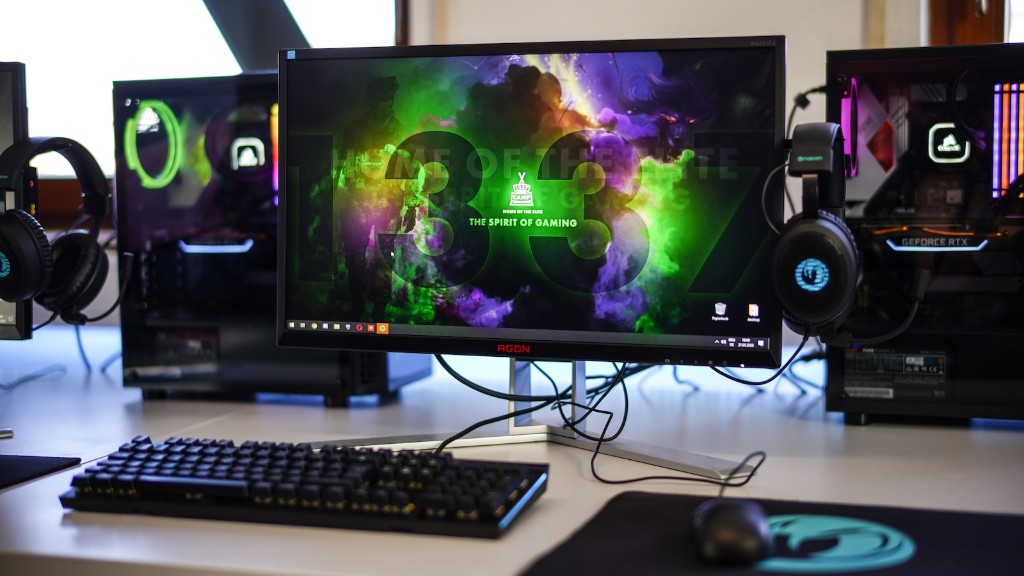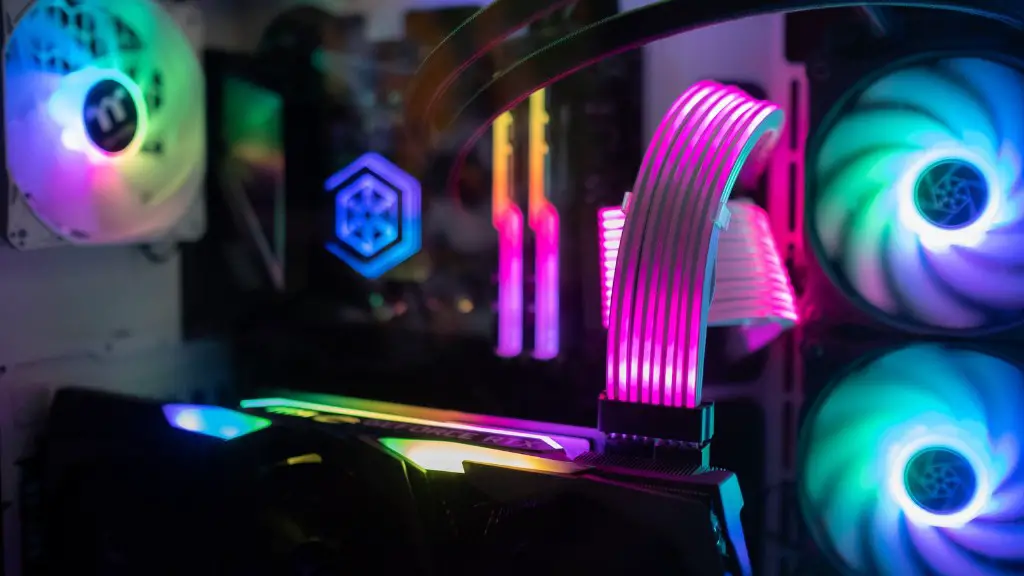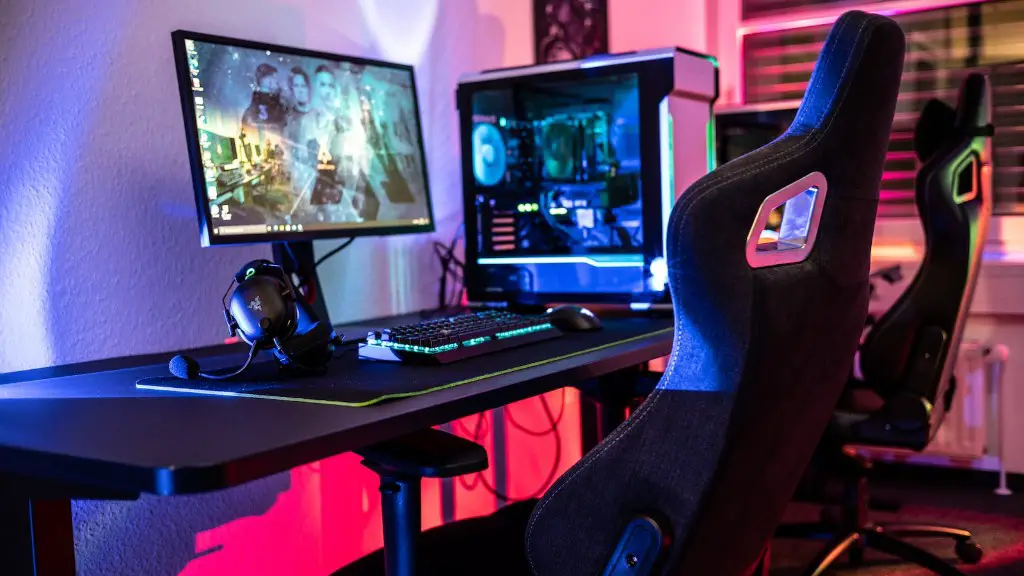Updating gaming PC drivers is essential to maintaining the best gaming experience. Ensuring they remain up-to-date can be a hassle, but with a few simple steps you can keep your gaming experience optimized.
First off, you’ll need to find out which video card or graphics card your computer is running, and then check the latest drivers online. You can find this information by right-clicking on the Desktop and selecting ‘Graphics Properties’. From there, you’ll find out which driver version is installed. Then visit the manufacturer’s website, such as NVIDIA or AMD, and search for the latest available driver version from the Support page.
Once you’ve identified the driver version, download it onto your computer. Make sure to read the installation instructions, so that you don’t need to restart your computer or have any compatibility issues.
Once you’ve downloaded the latest driver, you can use an application such as Driver Booster to update the installed driver version. This will help reduce hardware issues due to outdated drivers and maintain the best performance for your PC. Additionally, make sure you’re running the latest version of the drivers for your sound card, as this can also affect gaming performance.
If you use Windows Update to update drivers, you’ll need to know the model number of your computer. If you don’t know this information, you can use a tool such as Device Manager to find it. You can access Device Manager by right-clicking on My Computer and selecting ‘Properties’. Windows Update will then automatically update the drivers, although you may need to manually download and install some drivers in order to get the best performance.
Lastly, you can use online services such as Driver Genius or DriverFinder to scan for and automatically update drivers for your gaming PC. These services can be very helpful, as they make the process of finding and updating drivers much easier and faster. However, be sure to read the privacy policy and ensure that the service is reliable before using it.
Optimizing Performance with Drivers
Ensuring the driver versions are the latest can help to achieve optimum performance in gaming. New driver versions can contain bug fixes and performance improvements, allowing your gaming experience to be smoother and more stable. Additionally, newer driver versions can add new features, or provide compatibility with new game titles.
However, be sure to check the system requirements for each game you’re planning to play. Some games may require specific driver versions, or even require Nvidia and AMD drivers to be up-to-date in order to give the best graphical performance. Of course, you’ll also want to ensure that your processor can run the game, as it may be limited by the processor if the driver versions are too old.
It is also important to keep in mind that some game titles may be incompatible with newer drivers. This can be the case for older game titles, as they tend to rely on outdated libraries that are no longer supported. If this happens, there may be a way to patch the game, otherwise you may need to run the game in compatibility mode.
Driver Clashes with Programs
In certain cases, you may encounter driver clashes with other programs. This can happen if you have installed two drivers of the same type, or two drivers that are incompatible. You should always ensure that there is only one driver installed at a time, and if possible, uninstall older drivers before installing newer ones.
You should also watch out for driver software, as this can cause conflicts. This refers to programs that offer additional features for your drivers, such as anti-aliasing, dynamic lighting, and other graphical enhancements. These kinds of programs can cause conflicts in games, so be sure to check for compatibility before installing them.
Drivers can also become outdated due to changes in the game. Developers may release new patches that require newer drivers, or new game content may require different drivers – you should always keep an eye on the latest updates to ensure the best performance in games.
Finally, if a driver makes your system unstable, or if it causes your game to crash or stutter, it is best to uninstall it. You can bring back the previous driver version by going to the Device Manager in Windows and choosing the ‘Roll Back Driver’ option.
Troubleshooting Drivers
If you encounter any issues with updating drivers, there are a few troubleshooting steps you can follow. Firstly, you should check to make sure you’re using the correct driver version. Sometimes you can run into problems if you’re using the wrong version, or if you have installed a driver multiple times. Be sure to check your driver version against the one on the manufacturer’s website.
You may also need to update other drivers or programs in order to get the best performance. For example, updating your sound card drivers can improve the sound quality in games. Similarly, you’ll need to make sure you’re running the latest version of Windows in order to get the best performance.
If you still encounter problems, you can attempt to reinstall the drivers. This can fix some driver issues, and is particularly useful if you are running an older version of the drivers. You can reinstall the drivers by going to the manufacturer’s website and downloading the latest version.
Another option is to use a tool such as CCleaner to clean your registry. This can help to fix corrupted drivers, as the registry is the main source of driver-related information for Windows. This is especially useful if you are having trouble with an outdated driver.
Driver Errors
In some cases, you may experience driver errors when updating drivers. This can happen if the update doesn’t install correctly, or if you are using an outdated version of the driver. You can troubleshoot these issues by running the Windows Troubleshooting tool, or by uninstalling and reinstalling the driver.
It is also possible to disable the automatic driver update feature in Windows. Disabling it will stop Windows from updating any drivers, so you may need to manually update them. To do this, go to the Device Manager in Windows and click on the ‘Driver tab’. From here, you can click the ‘Disable Automatic Driver Updates’ checkbox.
If you are still encountering issues, or if the driver is causing your system to crash, you can use the System Restore feature to roll back the driver. This is useful if you have accidentally installed the wrong version of a driver and you can’t seem to fix it. To do this, go to the Control Panel in Window and select the ‘System and Security’ option.
If all else fails, you can contact the manufacturer and ask for support. Most companies will provide support for their products, and can provide advice on how to enable the driver in the correct way.


